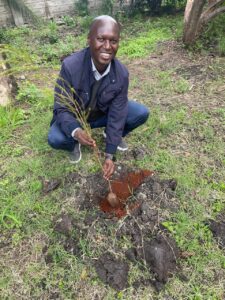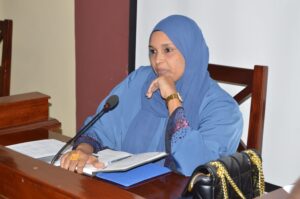Food Crises are Forecast to Escalate Across the Region in 2023

Intergovernmental Authority on Development (IGAD) continued to grapple with a severe food crisis in 2022, with over 55 million people facing acute hunger and requiring urgent food, nutrition, and livelihood assistance – an increase of over 13 million from 2021 – according to the latest IGAD Regional Focus of the Global Report on Food Crises (GRFC) 2023.
The annual GRFC is produced by the Food Security Information Network (FSIN) in support of the Global Network against Food Crises (GNAFC). The fifth edition of the report was officially released on 14th June 2023 by IGAD in Nairobi, unveiling the alarming escalation of acute food insecurity in the region over the years.
Seven out of the eight IGAD member states needed urgent food assistance (Djibouti, Ethiopia, Kenya, Somalia, South Sudan, Sudan, and Uganda, while no data was available for Eritrea), marking the highest number of acutely food-insecure people in the region over the past five years.
The worsening situation is attributed to the compounding effects of multiple shocks, including an unprecedented three-year drought in the Horn of Africa, record-breaking flooding in South Sudan, protracted conflicts, and macroeconomic challenges driven by the ongoing impacts of COVID-19 and exacerbated by the war in Ukraine.
According to IGAD Executive Secretary, Dr. Workneh Gebeyehu, “Hunger levels in our region are at an unprecedented high. This situation is inextricably linked to climate extremes and disasters, conflict and insecurity, and economic shocks, which are increasingly intertwined with spiraling negative consequences for tens of millions of children, men, and women”
2023 Projections
Up to 30 million people are expected to require humanitarian food assistance in five countries for which projections are available – Kenya, Somalia, South Sudan, Sudan, and Uganda. Of these, an estimated 7.5 million people in Kenya, Somalia, South Sudan, and Sudan are projected to face large food consumption gaps and adopt emergency coping measures (Emergency, IPC Phase 4), and more than 83,000 individuals are anticipated to face extreme food lack of food (Catastrophe, IPC Phase 5) in the most severe drought and conflict-affected areas of the region, particularly in Somalia and South Sudan. These projections do not account for the recent clashes in Sudan, which will undoubtedly exacerbate the already poor food insecurity situation.
Even if the March-May 2023 rains bring some relief from the Horn of Africa’s worst drought in more than four decades, the region will continue to deal with its catastrophic consequences in 2023 and beyond. The recovery of pastoral and agropastoral livelihoods from the devastating three-year drought will take years and humanitarian assistance continues to be critical until households and communities can recover.
In Sudan, the impact of the ongoing conflict on food availability and access is expected to drive a rapid deterioration in the food security and nutrition situation, with Khartoum and the region of Darfur most affected. By mid-May, more than 1 million people had fled their homes with around 843 000 people newly displaced internally and more than 250,000 people displaced to neighboring countries.
“The conflict in Sudan is sending hunger shockwaves across an already fragile region, as hundreds of thousands of people continue fleeing to neighboring countries – pushing up already alarming food insecurity and malnutrition levels, and further stretching scarce humanitarian resources,” said Rukia Yacoub, WFP’s Deputy Regional Director for Eastern Africa.
Looking ahead
The urgency and magnitude of the challenges that the Eastern Africa region faces calls for immediate and coordinated action to alleviate the suffering of millions affected by acute food insecurity, as stated in the IGAD communique on the process of addressing food crises in the region.
“This crisis calls for a paradigm shift. To make advancements towards SDG 2 to End Hunger, we must take bolder action to build resilience against future shocks, including transforming our agri-systems to become more efficient, inclusive, and sustainable. In addition, we must increase our efforts to build and sustain peace. Conflict and food insecurity are intertwined, and this has never been clearer”, the IGAD Executive Secretary added.
The message was echoed by FAO’s Subregional Coordinator for Eastern Africa and Representative to the African Union and to the United Nations Economic Commission for Africa Dr Chimimba David Phiri, stated: “This report should serve as a wake-up call for us to take immediate and collective action to change our ways of working to address the root causes of food insecurity. The recent three-year drought across the Horn of Africa highlights the urgent need to upscale and institutionalize anticipatory action and climate adaptation strategies to prevent, rather than just respond to future climate emergencies. Meanwhile, food insecurity caused by conflicts and the knock-on effects of global economic shocks highlights the critical need for efforts that sustainably build peace, increase domestic production, and reduce post-harvest losses in the IGAD region.”







